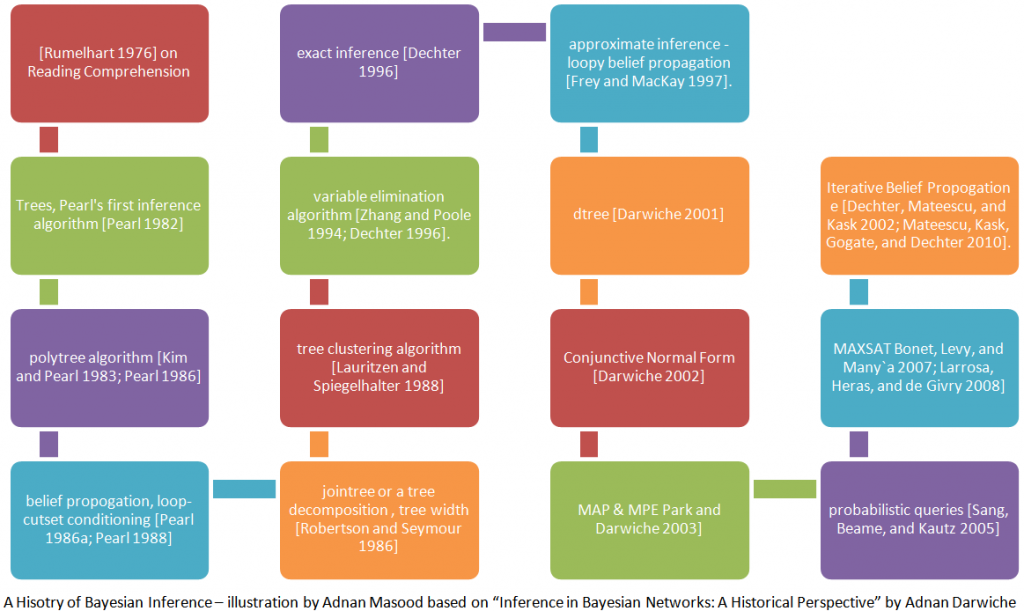Since calling this post just On the history of Bayesian inference will be non sequitur.
Judea Pearl won the ACM Turing Award, widely considered the "Nobel Prize in Computing" for his contribution in the areas of developing "Novel Framework for Reasoning under Uncertainty that Changed How Scientists Approach Real World Problems". This framework is the notion of Bayesian Networks aka Bayesian Belief Networks or just Belief Networks. In a 2010 event honoring the achievements of Dr. Pearl, chair of automated reasoning group in UCLA Dr. Darwiche wrote an excellent piece on Inference in Bayesian Networks, a historical perspective which is a highly recommended reading for Belief network enthusiasts, historians, practitioners and researchers alike.
This paper outlines the origin of what we now know as Bayesian Networks; it all started as Judea's poly-trees, evolved to multiple connected networks and brought the concept of causality and diagnostic support to the earlier days of "representation-only" graphs. Over the decades this discipline which started from simpler variable conditioning techniques and loop-cutset algorithms has matured and evolved into sophisticated iterative belief propagation, exact and approximate inference, and probabilistic queries. Beside the notion of causality in belief networks, it's direction and implications, Dr. Pearl's work has also spawned the area of probabilistic graphical models research, which now considers Belief networks as one of its subsets.
Reading through Dr. Pearl’s Publications, the researcher gets the true sense of how inference, causality and learning has evolved as part of the Bayesian networks. In his tribute paper, Inference in Bayesian Networks, a historical perspective, Dr. Darwiche (publications) provides concise insight into the evolution of Bayesian inference. Dr. Darwiche insight into the future of Bayesian Networks is thoughtful as he concludes the paper with following.
There is clearly a lot more to be done as we seem to always exceed the ability of existing algorithms by building more complex networks. In my opinion, however, what is greatly missed since Pearl’s initial work on this subject is his insistence on semantics, where he spared no effort in establishing connections to cognition, and in grounding the most intricate mathematical manipulations in human intuition.

